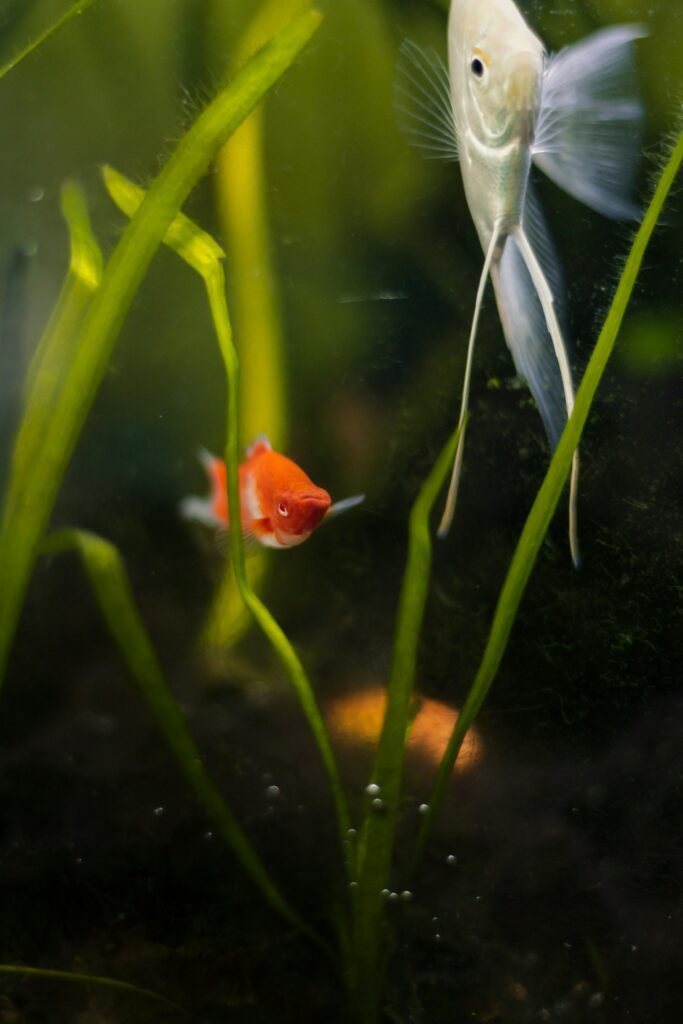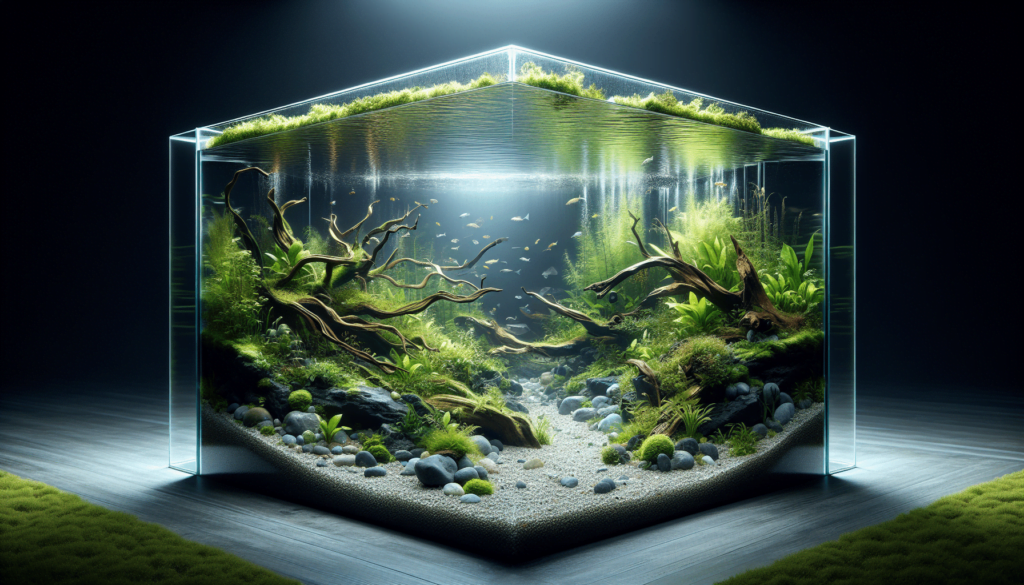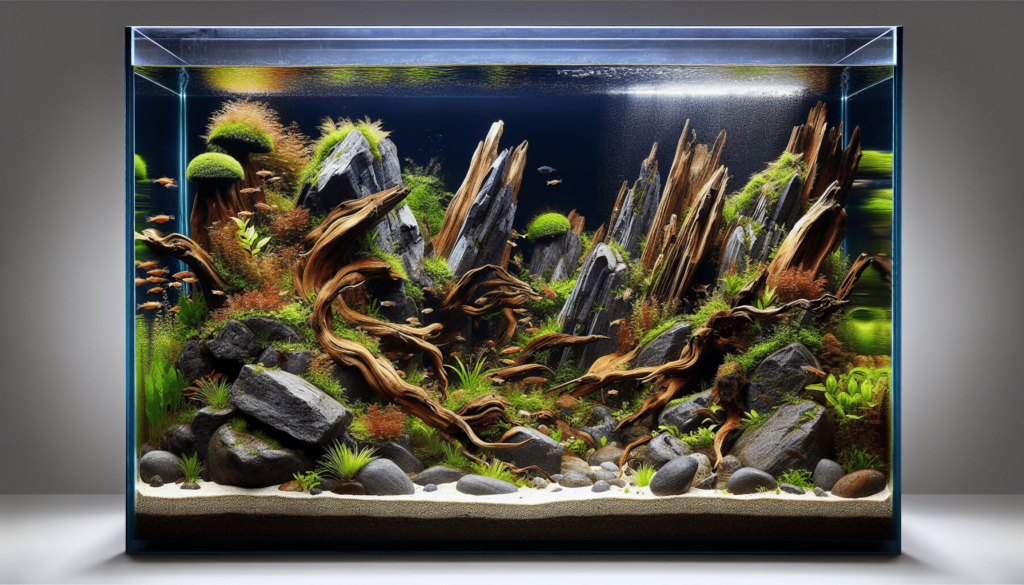Imagine you can create a tiny, magical water world inside your home, full of colorful fish and beautiful plants – that’s what aquascaping is all about! Aquascaping is an art form, where you arrange rocks, plants, and water to make a stunning miniature landscape in an aquarium. It’s like being a gardener and an artist, but your garden is underwater and your art is alive! Long ago, people started experimenting with ways to decorate fish tanks, and now, there are all kinds of cool trends and techniques to make your aquatic garden look amazing. You’ll learn how to pick the right plants and stones, and even how some smart folks use different perspectives to create underwater scenes that look like jungles, deserts, or even other planets! Along the way, we’ll look at some examples of incredible aquascapes and how they help us understand what makes a beautiful water garden. So, get ready to explore the art of aquascaping and maybe even start creating your own little water world!

Understanding Aquascaping
Definition of Aquascaping
Aquascaping is like gardening, but under water! Imagine you have a fish tank and you arrange plants, rocks, and sand in it to make a beautiful underwater garden. That’s aquascaping. It’s not just about making the tank look nice, though. It’s also about creating a healthy environment for the fish and plants that live there.
Origins of Aquascaping
Aquascaping started a long time ago, but it became really popular in the 1990s because of a man named Takashi Amano from Japan. He used plants, rocks, and wood to make his aquariums look like little pieces of nature. People loved his work, and he inspired many to start aquascaping their own tanks.
Importance of Aquascaping in Aquariums
Aquascaping is important because it makes the fish tank not only pretty but also a good home for fishes and plants. It helps fish feel safe and happy, just like they would in a real river or ocean. Plus, it’s fun for you to create and take care of!
Basic Concepts in Aquascaping
Aquarium Layout Types
There are many different ways to arrange your underwater garden. Some people like to make it look like a jungle, others like to make it look like a beach, and some even like to copy their favorite scenes from nature or movies.
Principles of Creating Balance in Aquascaping
When you’re aquascaping, you want everything to look just right. That means not putting too many plants on one side or too many rocks on the other. You want your aquarium to look natural and balanced, like a real piece of nature.
The Rule of Thirds and Golden Ratio in Aquascaping
These are fancy ways to say that some arrangements look better than others. Imagine dividing your tank into three parts or arranging things so there’s a nice mix of big and small items. That’s what these rules help you do!
Aquascaping Elements
Types of Plants
There are lots of different plants you can use in your aquarium. Some need a lot of light, and some can grow in darker areas. You can choose from tall plants, short plants, red plants, and green plants to make your tank colorful and interesting.
Types of Substrates
Substrate is just a fancy word for the sand or gravel you put at the bottom of your tank. Some plants need special kinds of substrate to grow well, so it’s important to choose the right kind.
Importance of Rocks and Driftwoods
Rocks and driftwoods are not just decorations. They help make your tank look more natural and can give fish places to hide. Plus, some plants like to grow on them!
The Role of Water Chemistry in Aquascaping
Understanding PH levels
PH levels tell you if your water is more like vinegar (acidic) or more like baking soda (alkaline). Fish and plants need the PH level to be just right, or they might not be happy or healthy.
Importance of Nitrate and Phosphate Levels
Nitrates and phosphates come from fish waste and left-over fish food, and they can make algae grow too much if there’s a lot of them. Keeping these levels low is a part of taking care of your tank.
Influence of Carbon Dioxide in Plant Growth
Plants need carbon dioxide to grow, just like they need sunlight. In aquascaping, some people add extra carbon dioxide to their tanks to help the plants grow faster and healthier.

Equipments in Aquascaping
Selection of Aquarium Light
Light is super important for plants. You have to make sure your tank has enough light for the plants you’ve chosen, or they might not do well.
Co2 Setup for Aquascaping
If you decide to add extra carbon dioxide to your tank, you’ll need a CO2 setup. This can include a CO2 tank, a regulator, and a diffuser to make sure the CO2 mixes well with the water.
Role of Air Pumps in Aquascaping
Air pumps help move the water around and keep it fresh. This is good for the fish and plants. Plus, the bubbles can look really cool!
Maintaining Aquatic Plants
Propagating Your Aquatic Plants
Did you know you can make more plants from the ones you already have? This is called propagating. Some plants can be cut and replanted, and they’ll grow into new plants!
Tools for Cutting and Pruning Aquatic Plants
Just like gardening on land, sometimes you need to trim your underwater plants. There are special scissors and tools for this so you don’t hurt the plants or your tank.
Preventing and Treating Plant Diseases
Sometimes plants can get sick, but don’t worry! There are things you can do, like changing the water or using special treatments, to make them better.

Designing an Aquascape
Planning Your Aquascape
Before you start, it’s a good idea to think about how you want your tank to look. You can draw a picture or look at photos for inspiration.
Setting up the Hardscape
Hardscape means the rocks and wood in your tank. You should put these in first before you add plants or water.
Planting Strategy in Aquascaping
Where you plant things is important. You usually want taller plants in the back and shorter plants in the front so you can see everything.
Common Aquascaping Styles
Nature Style Aquascaping
This style is all about making your tank look like a slice of nature. That could mean a forest, a riverbed, or any other natural scene.
Dutch Aquascaping
Dutch aquascaping is like a fancy garden with lots of different plants and colors. It’s really pretty and focuses a lot on the plants.
Iwagumi Style Aquascaping
In Iwagumi style, rocks are the stars. There are usually only a few types of plants, and the rocks are arranged in a special, balanced way.

Addressing Common Mistakes
Avoiding Overpopulation of Fish
Too many fish can make the tank dirty and unhealthy. Make sure to have just the right amount so everyone is happy.
Steering Clear of Excessive Algae
Algae can take over if the water isn’t clean or if there’s too much light. Keeping the tank clean can help stop this.
Dealing with Plant Melting
Sometimes new plants “melt” or look like they’re dying when you first put them in the tank. Often, they just need time to adjust to their new home.
Maintaining an Aquascape
Water Changes and Filter Maintenance
Clean water is super important. You’ll need to change some of the water regularly and make sure the filter is working well.
Plant Pruning and Maintenance
Just like a garden, your underwater garden needs to be taken care of. That means trimming plants, removing dead leaves, and making sure everything looks nice.
Addressing the Needs of Fish and Invertebrates
Finally, don’t forget about the fish and little creatures in your tank! They need the right food and a clean, safe home to be happy.




